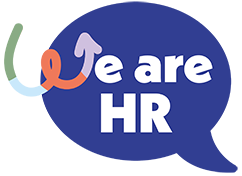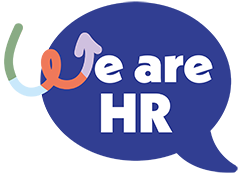Table Of Contents
- Understanding and Managing Workplace Trauma
- Introduction
- What is Workplace Trauma?
- How Trauma Manifests in Professional Settings
- The Effects of Workplace Trauma on Employees and Business Outcomes
- Strategies for Fostering a Trauma-Informed Workplace
- The Role of Leadership in Managing Workplace Trauma
- How CIPD & CMI Qualifications Can Help
- Conclusion
Introduction
Workplace trauma is often associated with extreme events, but it also arises from persistent stress, toxic work cultures, and unresolved conflicts. When left unaddressed, it can negatively impact employees’ well-being and business productivity. Recognising and managing trauma in the workplace is essential for fostering a healthier, more supportive environment.
This article explores workplace trauma, its effects, and practical strategies to create a trauma-informed workplace. We also highlight how CIPD and CMI qualifications can help leaders and managers develop the necessary skills to support employees effectively.
What is Workplace Trauma?
Workplace trauma refers to emotional, psychological, or physical distress caused by prolonged exposure to stressful conditions. Unlike personal trauma, workplace trauma stems from professional settings and may result from:
- High-pressure environments
- Workplace bullying or harassment
- Organisational restructuring or mass layoffs
- Toxic leadership or micromanagement
Trauma in the workplace can lead to burnout, anxiety, and disengagement, which ultimately affects individual and organisational performance.
How Trauma Manifests in Professional Settings
Workplace trauma does not always appear as immediate distress but often builds up over time. It can manifest in different ways, including:
Psychological Symptoms:
- Increased anxiety and stress
- Difficulty concentrating or making decisions
- Decreased motivation and job satisfaction
Physical Symptoms:
- Fatigue and sleep disturbances
- Headaches and muscle tension
- Weakened immune system
Behavioural Symptoms:
- Withdrawal from colleagues and work
- Frequent absenteeism or lateness
- Reduced performance and productivity
The Effects of Workplace Trauma on Employees and Business Outcomes
When workplace trauma goes unrecognised, it has a cascading effect on both employees and business outcomes:
Effects on Employees:
- Increased mental health issues such as anxiety and depression
- Higher levels of stress leading to burnout
- Decreased job satisfaction and engagement
Effects on Business Outcomes:
- High turnover rates and difficulty retaining talent
- Reduced productivity and innovation
- Increased absenteeism and presenteeism
- Legal and reputational risks due to unresolved workplace conflicts
Addressing workplace trauma is essential not just for ethical leadership but also for long-term business success.
Strategies for Fostering a Trauma-Informed Workplace
A trauma-informed workplace acknowledges the impact of trauma and integrates policies and practices that promote a supportive environment.
Promote Psychological Safety
Encourage an open and supportive culture where employees feel comfortable discussing concerns without fear of retaliation.
Train Managers and Leaders
Equip leaders with the skills to recognise and address trauma symptoms in employees. Training in emotional intelligence and active listening can make a significant difference.
Implement Workplace Wellness Programmes
Offer mental health resources, counselling, and stress management workshops to support employees.
Foster Transparent Communication
Clear, honest communication about expectations, changes, and challenges can help reduce uncertainty and anxiety in the workplace.
Encourage Work-Life Balance
Promote flexible working hours, reasonable workloads, and regular breaks to help employees maintain their well-being.
The Role of Leadership in Managing Workplace Trauma
Leaders and managers play a crucial role in recognising and mitigating workplace trauma. Here’s how they can contribute:
- Empathy and Active Listening: Creating a culture where employees feel heard and valued.
- Conflict Resolution: Addressing workplace conflicts promptly to prevent prolonged distress.
- Adaptable Leadership Styles: Understanding different employee needs and adjusting leadership approaches accordingly.
- Regular Check-Ins: Conducting one-on-one meetings to monitor employee well-being and job satisfaction.
How CIPD & CMI Qualifications Can Help
Developing leadership and management skills is crucial for fostering a trauma-informed workplace. Our CIPD and CMI courses provide professionals with the knowledge and strategies to manage workplace trauma effectively.
CIPD Courses:
- CIPD Level 3: Foundation Certificate in People Practice – Ideal for HR professionals seeking a basic understanding of employee well-being.
- CIPD Level 5: Associate Diploma in People Management – Equips HR professionals with skills to develop positive workplace cultures.
- CIPD Level 7: Advanced Diploma in Strategic People Management – Focuses on leadership strategies for workplace well-being and mental health.
CMI Courses:
- CMI Level 5: Diploma & Certificate in Management and Leadership – Suitable for mid-level managers looking to enhance leadership skills.
- CMI Level 7: Diploma & Certificate in Strategic Management and Leadership Practice – Designed for senior managers aiming to build strategic and trauma-informed leadership capabilities.
These courses empower professionals to create inclusive and resilient workplace environments.
Conclusion
Workplace trauma is a significant challenge that affects both employees and business outcomes. By recognising its signs and implementing trauma-informed strategies, organisations can create healthier and more productive work environments.
Investing in professional development through CIPD and CMI qualifications equips leaders and HR professionals with the expertise to manage workplace trauma effectively. Explore our courses today and take the first step towards fostering a more supportive workplace culture.


